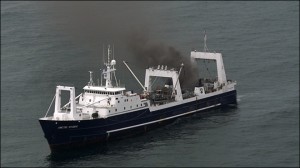206.624.8844
NIOSH Finds That Life Jackets Save Lives in Commercial Fishing
Despite the deaths of 131 commercial fishermen from 2000 to 2009, the regulation of fishing vessel safety is very limited, in part, due to a strong commercial fishing lobby. According to the National Institute of Occupational Safety and Health (NIOSH), half of these fishermen died from vessel disasters and another 31 percent died from falls overboard. NIOSH is a leader in promoting the use of life jackets and other safety measures in the fishing industry. NIOSH has found that only one of the 191 fishermen who died between 2000 and 2012 was wearing a life jacket. While wearing a life jacket does not guarantee survival, it certainly greatly increases your chances of survival in the event that you fall overboard.
The types of life jackets worn on fishing vessels decks tend to vary based on the fishery. According to a NIOSH survey, crabbers favored the use of Mustang and Sterns Inflatable Suspenders, while longliners preferred only the Mustang suspenders. Gillnetters liked the Mustang suspenders, and Regatta Fishermen’s Oilskins with floatation built in. Deck crews of Trawlers preferred inflatable suspenders, oilskins and a Stearns’ foam vest. Given the different work requirements of the various fisheries, it is important for vessel owners to share information about what works best and to encourage or mandate the use of life jackets out on deck.
Because of the number of deaths caused by falling overboard, the use of life jackets has become a major focus at NIOSH. The organization has been pushing employers to have a plan for when fishermen onboard should be wearing a lifejacket. Standards may vary from vessel to vessel, and could be based on weather, duties, location of the ship, and other factors. However, NIOSH is pushing all employers to have a plan for the use of life jackets. In addition to life jackets, NIOSH stresses the use of man overboard alarms, personal locator beacons, and closing water-tight hatches on fishing vessels as important safety precautions that can save lives.
 Seattle Maritime Injury Lawyer Blog
Seattle Maritime Injury Lawyer Blog


